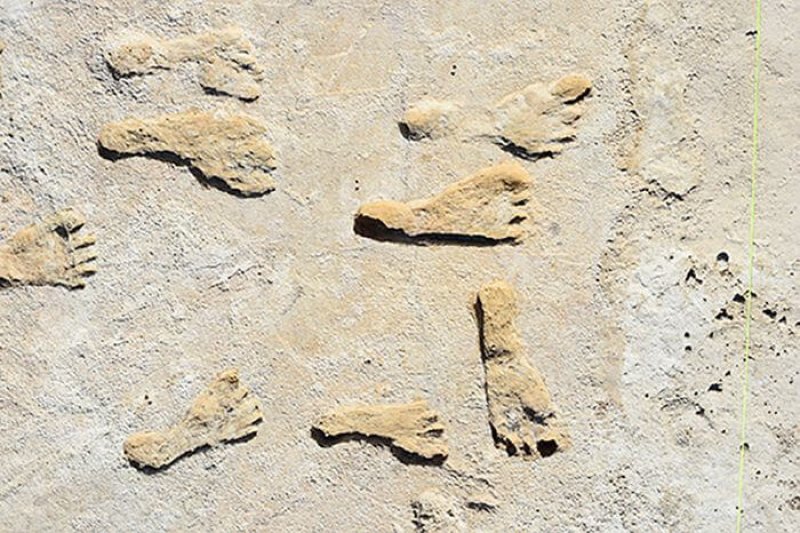For decades, many scientists were convinced that humans first arrived in the Americas as recently as 13,000 years ago, reaching the continent after crossing an ice-free land bridge from Asia or by sea along the Pacific coast on the journey from humanity’s African homeland. Others argued that they arrived about 16,000 years ago, or even as much as 30,000 years ago. There simply wasn’t enough evidence in the fossil record to settle the debate.
But… newly found footprints show that humans lived in the American Southwest in an era when massive ice sheets blocked the way for migrants from Asia to the New World, the researchers said.
“This definitely gives a really strong boost to the argument that humans were living in North America at this time, much earlier than previously thought,” said Kevin Hatala, a paleobiologist at Chatham University in Pittsburgh who studies the evolution of human walking.
Under most circumstances, fossilized footprints are impossible to date precisely. But these were interleaved with sediments containing seeds of aquatic plants that once flourished along the lake. Radiocarbon dating of the plants showed that the footprints were 21,000 years to 23,000 years old.































